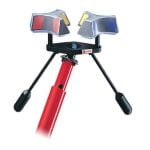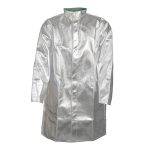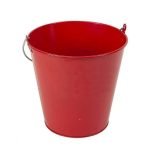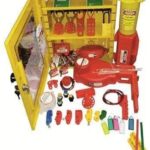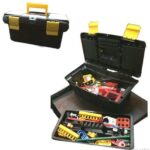Your list is empty, add products to the list to send a request
How to Safely Use a Fire Extinguisher: A Complete Fire Emergency Guide

30
May
In a fire emergency, knowing how to safely use a fire extinguisher can make the difference between minor damage and a full-scale disaster. While these devices are simple in design, they require proper handling and a clear understanding of safety procedures.
In this guide, we break down how to use a fire extinguisher safely, when to use it, and what precautions to take to avoid injury or escalation.
Why Fire Extinguisher Safety Is Important
Fire extinguishers are first-response tools meant for small, contained fires. Misuse can result in burns, smoke inhalation, or making the fire worse.
The National Fire Protection Association (NFPA) stresses that proper training and confidence are essential before using an extinguisher. When in doubt, evacuate immediately and call emergency services.
When to Use a Fire Extinguisher
Only use a fire extinguisher if:
- The fire is small and contained
- You have a clear escape route
- The extinguisher is correctly rated for the fire type
- You’ve already alerted others or called the fire department
If the fire grows or fills the room with smoke, evacuate immediately.
Understanding Fire Classes Before Using an Extinguisher
Different extinguishers are designed for different fire types:
- Class A: Paper, wood, cloth
- Class B: Flammable liquids (gasoline, oil)
- Class C: Electrical equipment
- Class D: Combustible metals
- Class K: Cooking oils and fats (commercial kitchens)
Use a multi-purpose extinguisher like the Safety One 6KG ABC Stored Pressure Fire Extinguisher, which is effective on A, B, and C class fires.
The PASS Technique: How to Use a Fire Extinguisher Safely
The most recognized method for operating a fire extinguisher is the PASS technique:
- Pull the pin: This unlocks the extinguisher’s operating lever.
- Aim low: Point the nozzle at the base of the fire.
- Squeeze the handle: Release the extinguishing agent.
- Sweep side to side: Cover the area evenly until the fire is out.
Remember: Stay at a safe distance (6–8 feet) while using the extinguisher.
Key Safety Precautions When Using a Fire Extinguisher
To reduce risk during an emergency:
- Always keep your back to an exit
- Avoid using water on electrical or grease fires
- Never turn your back on a fire after extinguishing
- Check the pressure gauge before using
- Wear protective gear if available (gloves, mask)
How to Check If a Fire Extinguisher Is Safe to Use
Before operating a fire extinguisher:
- Inspect the pressure gauge (needle should be in the green zone)
- Ensure the pin and tamper seal are intact
- Check the expiration date
- Look for visible damage, corrosion, or leakage
Do a monthly visual inspection for long-term safety.
Where to Position Yourself While Using an Extinguisher
Your position relative to the fire can impact your safety:
- Stand with your back toward the exit door
- Keep a clear path for escape at all times
- Stay low to avoid smoke inhalation
What to Do After Using a Fire Extinguisher
Once the fire is extinguished:
- Monitor for re-ignition
- Ventilate the area to remove smoke
- Call the fire department even if the fire seems out
- Arrange for recharging or replacing the used extinguisher
Never leave a used or partially discharged extinguisher uninspected.
How to Train Employees or Family Members
Fire extinguisher training is crucial in both homes and workplaces.
Training should include:
- Understanding fire types and extinguisher classes
- Demonstrating the PASS technique
- Practicing on simulated fires using training units
- Emphasizing evacuation procedures
Encourage regular drills to build confidence.
Maintenance and Inspection of Fire Extinguishers
Proper upkeep ensures your extinguisher is functional when needed:
- Inspect monthly for damage, pressure, and pin integrity
- Service annually by a certified technician
- Recharge immediately after use
- Replace units after 5–15 years depending on manufacturer recommendations
Choosing the Right Fire Extinguisher for Your Space
Key considerations include:
- Fire class coverage (A, B, C, D, K)
- Size and weight appropriate for users
- Portability and mounting options
- Certifications like ISI, CE, or BIS
The Safety One 6KG ABC Stored Pressure Fire Extinguisher is a great choice for homes, offices, and small businesses.
Conclusion: Be Prepared, Stay Safe
Using a fire extinguisher safely is a skill everyone should know. From understanding the PASS method to selecting the right type, preparedness can prevent injury and save lives.
FAQs
1. What are the safety precautions of using a fire extinguisher?
Keep your back to the exit, ensure the extinguisher is in good condition, never use water on grease or electrical fires, and call emergency services even if the fire is out.
2. What is the basic rule of using a fire extinguisher?
Use the PASS technique: Pull the pin, Aim low, Squeeze the handle, Sweep side to side. Always assess if the fire is small and manageable before attempting.
3. How do you use a fire extinguisher safely?
Check the pressure gauge, stand with a clear escape route, use the PASS method, and evacuate if the fire becomes unmanageable.
Protect your property with trusted safety gear.
Explore the Safety One 6KG ABC Stored Pressure Fire Extinguisher for reliable, versatile fire protection today.






